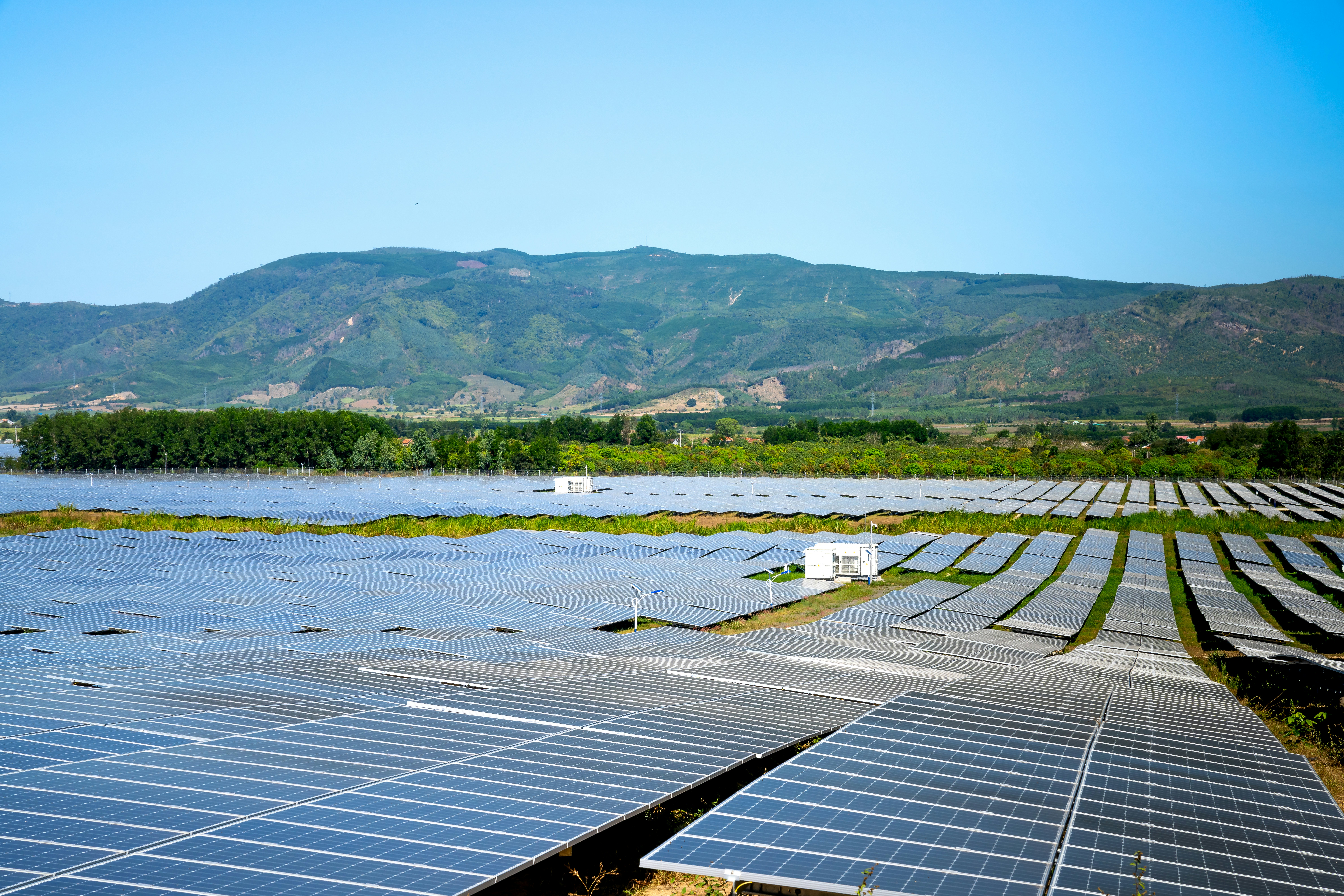POSTED
April 19, 2024
Are There Tax Benefits to Investors in Utility-Scale Solar Projects?
Are you thinking about investing in big solar projects that power entire communities? Understanding the tax perks of investments is crucial, especially for serious investors and those who care about the environment. This article will dive into the ins and outs of tax benefits in utility-scale solar projects. These projects offer a chance to make […]

Are you thinking about investing in big solar projects that power entire communities? Understanding the tax perks of investments is crucial, especially for serious investors and those who care about the environment. This article will dive into the ins and outs of tax benefits in utility-scale solar projects. These projects offer a chance to make money and play a key role in making our world cleaner and greener. We’ll explore the tax breaks available and how they are passed along to benefit investors. By the end, you’ll have a clearer picture of how investing in large-scale solar can benefit your wallet and the planet.
So, let’s dig in and uncover the tax advantages of investing in utility-scale solar projects.
Tax Benefits for utility-scale Solar Developers
When it comes to big solar projects, developers can tap into many tax benefits that make these projects more financially appealing. Let’s break down these tax credits and exemptions to see how they make investing in solar energy a smart move.
Investment Tax Credits (ITC)
One of the big tax benefits is the Investment Tax Credit (ITC). It’s like a discount on federal income taxes for developers who invest in solar projects. With the ITC, developers can claim part of the costs of their solar project as a credit, which means they pay less in taxes. This credit is currently at 30%(for those meeting the labor standards), but it’s slowly going down over time. So, developers want to use it while it’s still high.
Production Tax Credit (PTC)
Another helpful tax benefit is the Production Tax Credit (PTC). Unlike the ITC, which is a one-time thing, the PTC gives developers a stream of income based on how much renewable energy their project produces. PTC is great for investors who care about sustainability because it ties money directly to how much clean energy the project makes.
Modified Accelerated Cost Recovery System (MACRS)
There’s also something called the Modified Accelerated Cost Recovery System (MACRS). It lets developers speed up how quickly they can write off the cost of their solar assets over a few years, usually five. This route means they can get more money back sooner, making their investment more profitable.
Property Tax Exemptions
Developers can also benefit from property tax exemptions, depending on the local regulations. These exemptions lower the tax developers have to pay on their solar projects, which means they keep more of their profits. It’s another way these projects become more attractive financially.
Potential Returns of utility-scale Solar Projects
It’s important to know that while these tax benefits are great, they don’t directly affect investors in Shasta Power’s investment model. Instead, Shasta Power includes these benefits in their financial plans.
Solar projects offer promising return projections for Independent Power Providers, making them a desirable investment. These benefits boost the overall profits of their projects which makes the project initiation work undertaken by Shasta Power highly lucrative. We pass these gains on to investors with Shasta Power so they can get high returns without all the frustration associated with tax credits.

Understanding Potential Risks and Crafting Smart Investment Strategies
Investing in utility-scale solar projects has a high potential for good returns, but knowing about the potential risks is important. Let’s take a closer look at the different risks involved and find smart ways to invest in these projects.
Investment Risks Analysis
Utility-scale solar projects aren’t safe from risks. Changes in rules, new technology, and ups and downs in the market can affect how well these investments do. For example, if the government changes its energy policies, it could affect how much money developers get back in taxes and subsequently the sale price of energy projects. Changes in how much people use energy and how much it costs can also make a difference.
Importance of Due Diligence
Doing your homework before you invest in utility-scale solar projects is very important. You need to look closely at the projects, check their numbers, and see if they’re likely to do well. This means looking at reports on whether the projects make sense, how much money they’re expected to make, and if the people running them know what they’re doing. This is why we provide quarterly updates on all of our projects and are transparent about our experience and knowledge in the field.
Vetting Investment Opportunities
Examining investment opportunities is key to lowering risk. You should look at where the projects are, if they have what they need to work, what the rules are there, and if people want the energy they’ll make. Also, getting help from pros who know a lot about renewable energy can be a big help.
Role of Professional Investment Managers
These experts are important in helping investors make good choices about solar projects. Companies like Shasta Power know a lot about renewable energy and solar project origination. We choose the right projects and manage risks so you don’t have to. By working with us, investors can make better decisions and more money.
Investment Diversification Strategies
Spreading investments around is a smart way to lower investment risks. By putting money into many different projects, investors can ensure that they won’t lose everything if one doesn’t do well. This is why our Summit Power Fund does not focus on a single project for success; instead, it is diversified across many. Including utility-scale solar initiation projects in a mix of investments can help ensure enough variety, especially for people who care about the environment and want to know that their dollars are being used to create a greener world.
Clarification on Shasta Power’s Tax Benefits
Let’s discuss the tax benefits linked to Shasta Power’s investment deals. Shasta Power is a company focused on managing investments in solar projects. We don’t directly hand out tax benefits to investors. It’s essential to understand that the tax perks discussed here are just examples. The perks aren’t directly tied to Shasta Power.
The tax advantages we’ve discussed are built into solar projects and are not specifically connected to any investment manager like Shasta Power. While solar projects come with significant tax benefits, these benefits aren’t exclusive to any particular investment firm.
It is important to know the difference between the tax benefits linked to the solar project itself and individual tax benefits associated with investments generally. If you’re considering investing, it’s smart to chat with tax experts and financial advisors. They can help you understand the tax implications, including any potential benefits from investing in solar projects.

Why You Should Consider Investing in Solar
Let’s talk about why it’s a smart idea for accredited and ESG investors to put their money into solar projects. These investors have specific traits and preferences, and solar projects offer some amazing benefits that match what they’re looking for.
Profile of Accredited and ESG Investors
Accredited investors and investors who follow ESG principles want to grow their money through investments that make a positive impact on society. They’re okay with taking some risks as long as it helps them make good money while doing good things. They care about the environment and social issues and want their investments to reflect those values.
Alignment with ESG Principles
Solar projects are a perfect fit for ESG investors. They help the environment by creating clean energy and reducing pollution. By investing in solar, ESG investors can support renewable energy and feel good about where their money goes.
Strategic Investment Objectives
Solar projects are a smart investment choice for both short-term and long-term goals. They grow your initial investment and offer high income potential. Solar projects appeal to investors who want to balance their portfolios and see huge ROI projections.
Investment Entry Points and Capital Deployment Strategies
Accredited and ESG investors get involved in solar projects in many ways. They can invest directly in specific projects, join private funds that focus on renewable energy, or put money into renewable energy investment trusts. Each option offers a different level of involvement and risk, so investors can pick what works best for them.
Investing in solar projects is a smart move for accredited and ESG investors. With their positive impact on the environment, alignment with investment goals, and various ways to get involved, solar projects offer a great opportunity to make money while making a difference!
Conclusion
By now, it’s evident that utility-scale solar projects aren’t just about clean energy—they’re smart investments, too. These projects offer a rare chance to make money while positively impacting the planet. It’s an opportunity to align financial goals with sustainability objectives.
We urge you to consider adding utility-scale solar projects to your investment portfolios, especially accredited and ESG investors. Take advantage of the tax benefits while advancing your sustainability goals. The time to act is now.
For those eager to learn more, we invite you to join Shasta Power’s webinar, “3 Smart Reasons Why You Should Invest Directly In Solar.” It’s an opportunity to delve deeper and take your first step towards a brighter, more sustainable financial future.





